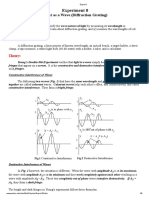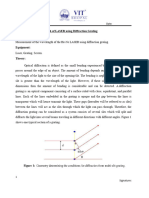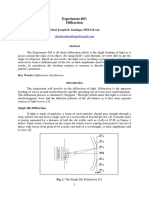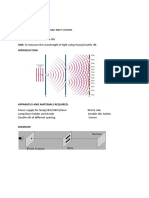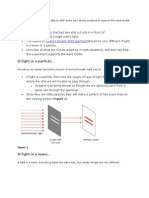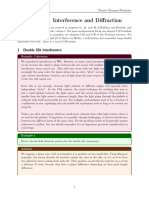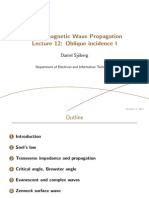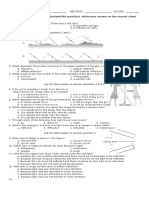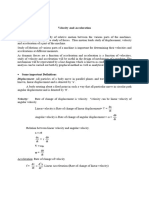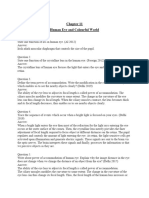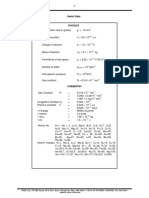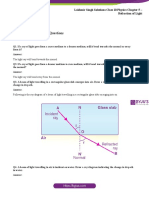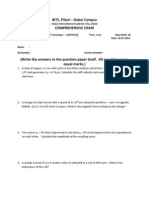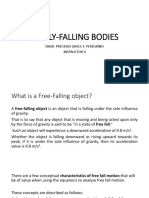0% found this document useful (0 votes)
22 views6 pagesPhysics Assignment
The document details experiments demonstrating the wave nature of light through single-slit and double-slit diffraction, highlighting how light behaves differently than predicted by a purely particulate theory. It includes calculations for wavelength and grating spacing, as well as the relationship between sound intensity and the threshold of hearing. Additionally, it provides formulas and results for sound intensity levels and energy incident on the eardrum.
Uploaded by
Dwight Jr GibbsCopyright
© © All Rights Reserved
We take content rights seriously. If you suspect this is your content, claim it here.
Available Formats
Download as DOCX, PDF, TXT or read online on Scribd
0% found this document useful (0 votes)
22 views6 pagesPhysics Assignment
The document details experiments demonstrating the wave nature of light through single-slit and double-slit diffraction, highlighting how light behaves differently than predicted by a purely particulate theory. It includes calculations for wavelength and grating spacing, as well as the relationship between sound intensity and the threshold of hearing. Additionally, it provides formulas and results for sound intensity levels and energy incident on the eardrum.
Uploaded by
Dwight Jr GibbsCopyright
© © All Rights Reserved
We take content rights seriously. If you suspect this is your content, claim it here.
Available Formats
Download as DOCX, PDF, TXT or read online on Scribd
/ 6


